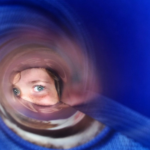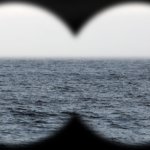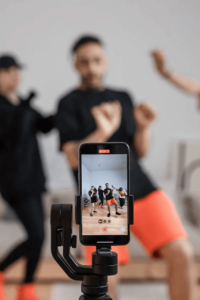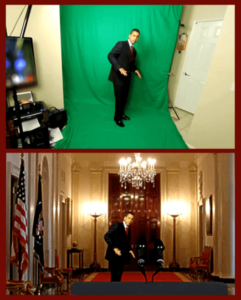The position from which something is observed is called a point of view. The point of view is often an essential ingredient of storytelling that enables you to convey a story. However, a film can be shown from different points of view, unlike a novel. Hence, a point-of-view shot is an effective tool to showcase a narrative in dynamic and unique ways.
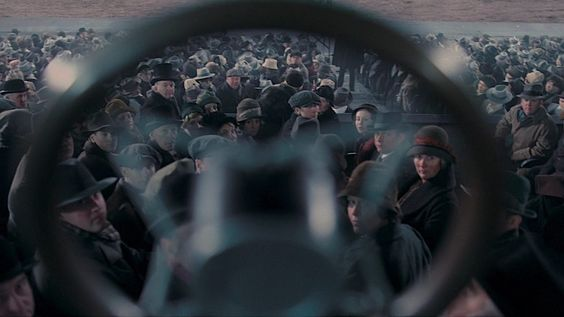
What is a POV shot?
A pov shot is a camera angle that shoots a scene from the view of a specific character. A movie director uses it to show us what their characters are witnessing. The next sequential shot often showcases the character’s reaction to the event, which helps convey the feelings and emotional state, making it robust. A point-of-view shot is also known as a subjective camera or first-person camera. Therefore, a Pov shot helps a filmmaker to:
- Establish a narrative
- Connect the audience emotionally with your character.
Further, a POV sequence may constitute at least three shots as below:
- A shot of the character witnessing an event or thing.
- The shot itself showcases the unfolding events.
- A shot that returns to the main action of the scene.

When to use a POV shot?
POV shots are the most used when the director wants to carry any emotions to a particular scene and attract the audience to the center of the action. Additionally, these shots must be used only when the storyline demands them.

Examples of POV shots in movies
Here are some examples of how POV shots have been used in films:
1. Action scene
One of the earliest uses of POV shots in cinema was in an action scene. This shot immerses the viewer into action and involves them. For example, in a snowball fight in Abel Gance’s 1927 film Napoleon, a handheld camera captured the battle. Additionally, rapid cuts added to the film’s dynamism, making it a dazzling shot.
 FHard
FHard2. The feel of the superhuman being or extraterrestrial being
Point-of-view shots help explain a character’s challenge in handling a particular situation. These shots help convey perspectives that you cannot acquire through observation. Being in the shoes of a superhuman or an alien will help the audience get their feeling. Some examples include:
Transformation scene from Spiderman
In Spiderman, Peter Parker’s learning phase to become a spiderman is shown from a third-person and first-person perspective. The first-person perspective gives the audience the thrill of living inside a superhuman.
Transformation to Spiderman scene
The nature of a cyborg from Terminator
Some of the less aspirational characters include mechanical characters like robots, aliens, and cyborgs. For example, Terminator constitutes many scenes that have been shown from a cyborg’s perspective. This includes portraying the cyborg’s vision, which gives a mechanical feel to the character. Additionally, he exhibits a lack of humanity and empathy, emphasizing this idea.
Arnold Schwarzenegger- come with me if you want to live
The technologically advanced alien from Predator
Another example is from the 1987 film Predator. This movie contains the scene when the alien finds its victims through heat vision shown through optical POV. These shots showcase the technologically advanced vision systems of these extraterrestrial beings.
“He couldn’t see me” scene from Predator
Hardcore Henry
Yet another movie that runs a whole ninety minutes with a point-of-view shot is Hardcore Henry.
3. Any character in an altered mental state
Any character in an altered mental state can be a good candidate for POV shots. These shots help depict their cognitive illusions, hallucinations, etc. For example,
Danny Boyle’s movie Trainspotting
Mark Renton sinking into the effect of heroin is shown through his eyes. The height of addiction is further enhanced when his live body is carried away to the hospital.
Gaspar Noe’s Enter the void
The first-person portrayal of Oscar shows him experiencing hallucinations under the influence of drugs and their effect on his health. Finally, an out-of-body experience is shown as his soul flies away and he encounters death.
Visual Trauma of Enter the Void
Diving Bell and the Butterfly
This movie showcases the first-person perspective of a disabled person named Jean Dominique. Although the hero is mentally intact, he cannot communicate it to his doctor. These perspectives arrest the audience and set them into a mode of helplessness.
4. Hides things from the audience
Pov shots are helpful, especially when you want to hide something or someone from the audience. For example, in Jaw, Steven Speilberg initially chose to work with a prop shark. Later, he found it unconvincing when shown too close. As a result, he created a series of underwater point-of-view shots from the shark’s perspective. Since the shark is hidden from the audience, it makes a thrilling sense of suspense and horror for the audience. Similarly, the movie Halloween was shot from an unknown intruder’s point of view. From an attacker’s perspective, this shooting technique sets a hostile and scary atmosphere.
Scariest shark attacks from the Jaw
5. Shooting from the view of an inanimate thing or person
Shooting from the perspective of an inanimate object enhances your audience’s expectations and keeps them engaged. Additionally, the reaction from your character instigates it further. For example, the famous trunk shots from the movie Tarantino are an excellent example of this technique.
How to use a POV shot in your work?
To make the POV shot work best for you and your storyline, you need to first distinguish between different POV shots to reap the maximum benefits of it. Since other shots evoke various emotions, you need to use them diligently. Most of the knowledge of using POV in your shots is instinctual when you know if the narrator is omniscient or if a scenario has to be told from a different point of view. Some of the common types of POV shots include:
1. First Person
In the first-person POV shot, the viewer sees the events from the main character’s view. This way, you involve your audience and include them in the storyline. Since your audiences are put into the main character’s shoes, they will be able to grasp your character’s emotions. However, not many full-length movies are entirely shot in this perspective as there will be a loss of emotional connection with the main character as your audiences don’t get to see them. Additionally, it demands highly creative editing skills to keep your audiences engaged.
First-Person Peripheral
In this type of POV shot, the perspective of a supporting character takes the main character’s place, unlike the previous shot. These shots are pretty uncommon and can only be used in specific genres. Additionally, it works well with horror movies since it gives a strange feeling to the viewers. For example, when the camera is positioned from the killer’s perspective, you observe the main character’s movement showcasing their vulnerability. Further, the killer’s intentions are also clearly defined while the story also moves forward with an element of suspense.
2. Second Person
The second-person POV shot is a shot from the audience’s perspective, an omniscient perspective. It is also known as the fourth wall break. The camera is positioned to face the character and directly connect with the audience. The fourth wall breaks bind the audience to the story and are humorous. However, these shots have to be used with caution to break the illusion.
3. Third Person
The third-person perspective is the most often used omniscient point of view shot. The camera is placed to watch the story unfold without acknowledging its presence. Additionally, these shots have a few differences, as listed below:
Third-Person Limited: This type of shot is the most frequently used among the third-person perspectives being adopted. You can achieve the effect of this shot even without assigning it to any character or device. Some examples of this type include wider shots or over-the-shoulder shots that showcase the interaction between characters. Found footage is another example of this type. This footage adds a meta-layer to the shot and brings a sense of realism.
Third-Person Omniscient: The third-person omniscient perspective comes into the picture when a pantomath or a narrator enters a story to narrate hidden or unknown facts via flashbacks or dream sequences. Typically, a narrator takes on this point of view. However, positioning the camera is quite tricky in this perspective and requires visual effects to create imagery outside the context of a live-action shot.
Videos
The Four best reasons to use POV shots
How to shortlist point-of-view shots?
Once you have decided to go with a POV shot for a character, you need to put it in a shot list to prepare for the same. In the shortlist, you need to include the details of specific camera movements and placements of the shot. This clarifies whether you want to use a handheld or a static camera. It also tells if the character must be shot at eye level or from a high angle. Including these details in a shot, the list helps you collaborate quickly and efficiently. Additionally, it enhances your creativity and breathes a natural air of beauty into your movies.
Gallery
Conclusion
Thus, point-of-view shots are one of the many powerful camera techniques you can use to immerse your audiences in the plot. Additionally, when used as part of a storyline, this technique adds some suspense, mystery, and emotions that add a unique perspective to your work.




